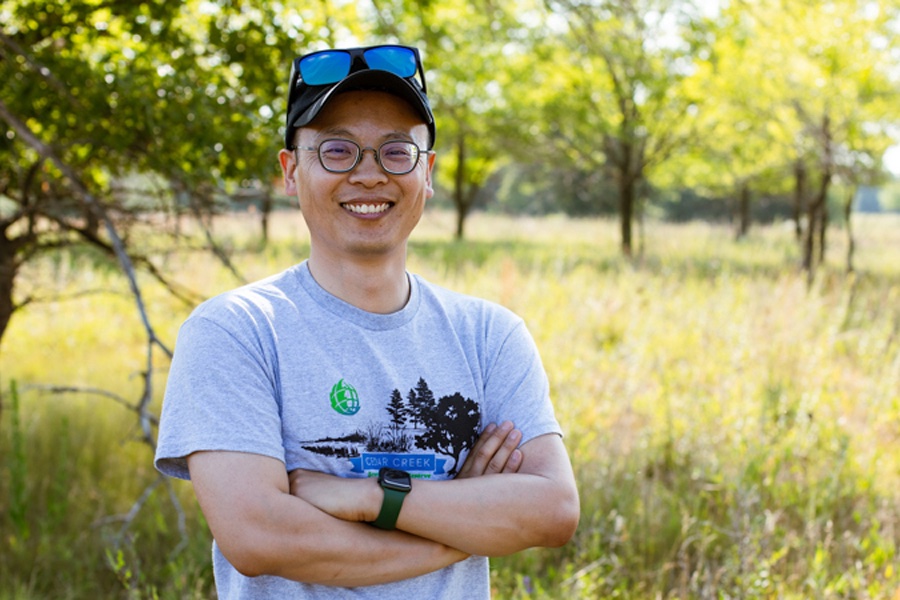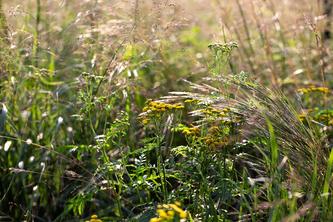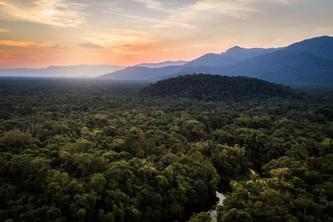
Life in his Inner Mongolian village gave young Maowei Liang lots of exposure to the natural world’s wide scale and power. Like the time he biked home in one of the frequent dust storms, washed his face and hands, and watched the water turn “super, super dark.”
“I think that's the first time I got a sense of ecology and how environmental changes affect people’s lives,” Liang muses.
It was also his first step on a winding road to the U of M’s Cedar Creek Ecosystem Science Reserve, where he is now a research scientist.
What really pushed Liang was witnessing the blasting and excavation of local mountains for industry use. The specter of the mountains’ “long, deep scars” propelled him to study landscape architecture in hopes of healing them. He majored in the subject as an undergrad, then earned a Ph.D. in ecology from Inner Mongolia University.
For his dissertation, Liang studied how sheep and cattle grazing—which is widespread in his homeland—affect the landscape and whether it can lead to dust storms. He observed that grazing had less severe effects on plant growth and biodiversity in wetter seasons than in seasons with normal rainfall.
“There was a strong interaction between rainfall variability and grazing intensity,” he notes.
When the Chinese government gave him funding to study abroad, he went to Michigan State University and honed his research skills.
As he began writing a paper on his work there, he noticed that “in the first paragraph, all the references came from Cedar Creek.”
Measuring the earth’s breathing
Liang soon realized how well his research interests meshed with those of scientists at Cedar Creek. Now one of them, he has taken on the tough job of sorting out how myriad factors like climate, soil nutrients, plants, and animals interact to shape ecosystems over time.
Cedar Creek is home to more than 100 experiments on abandoned farm and grazing land, and a central question is how well the nation’s large expanses of such lands can store carbon and mitigate climate change.
On one hand, carbon from the atmosphere gets into soil through plant roots and decaying foliage. On the other hand, soils lose carbon through respiration—the biological process that extracts energy from food and releases carbon dioxide back to the atmosphere.
It’s like measuring “the earth’s breathing,” says Liang. He wants to find out how a field’s age affects its ability to store carbon and thinks the older a field is, the more it likely can store.
And speaking of grazing, Cedar Creek scientists study first hand how bison affect ecosystems. Much of Cedar Creek was a classic oak savanna, and it’s hoped the bison can restore it by eating plants that have inhibited the growth of oak seedlings.
Liang can easily see himself taking that project by the horns. He also sees Cedar Creek as the premier place to study ecosystems.
“If we want to help people deeply understand how ecosystems work and how they respond to climate and land-use changes, we need a platform where we can unravel these complexities,” he says.
- Categories:
- Agriculture and Environment
- Climate Change
- Research
- Soil





